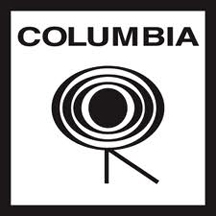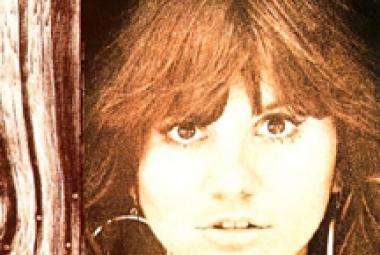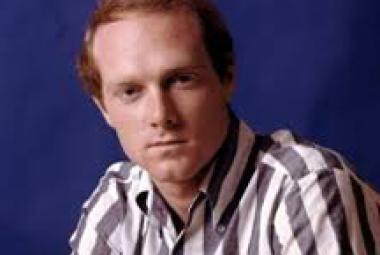Columbia Records is an American flagship recording label, under the ownership of Sony Music Entertainment, operating under the Columbia Music Group. It was founded in 1888, evolving from an earlier enterprise, the American Graphophone Company — successor to the Volta Graphophone Company. Columbia is the oldest surviving brand name in recorded sound, being the second major record company to produce recorded records as opposed to cylinders. Columbia Records went on to release records by an array of notable singers, instrumentalists, and bands. (More from Wikipedia)
The first Bob Dylan album, Bob Dylan was released with great fanfare by Columbia Records in March 1962; it is a relatively conventional folk album that is not unlike those that Joan Baez, Judy Collins, and Peter, Paul and Mary were recording at the time, with just two original songs. The album was produced by John H. Hammond, the legendary talent scout who signed Bob Dylan to Columbia. Though excellent in every way – for instance, the album includes “Man of Constant Sorrow”, the song (as performed by the Soggy Bottom Boys, with George Clooney on lead vocals) that was made famous in the 2000 Coen Brothers film O Brother Where Art Thou – Bob Dylan sold just 5,000 copies initially; and Columbia Records executives began grumbling about Dylan’s being “Hammond’s folly”.
* * *
At any rate, another producer was brought in to help out – an unlikely though inspired choice as it turned out. As described in Wikipedia: “Because of [Albert] Grossman’s hostility to [John] Hammond, Columbia paired Dylan with a young, African-American jazz producer, Tom Wilson. Wilson recalled: ‘I didn’t even particularly like folk music. I’d been recording Sun Ra and [John] Coltrane. . . . I thought folk music was for the dumb guys. [Dylan] played like the dumb guys, but then these words came out. I was flabbergasted.’”
* * *
Wikipedia describes what happened next: “On June 15, 1965, immediately after the recording session of ‘Like a Rolling Stone’, [Tom] Wilson took the original acoustically instrumented track of Simon and Garfunkel’s 1964 version [of “The Sounds of Silence”], and overdubbed the recording with electric guitar (played by Al Gorgoni and Vinnie Bell), electric bass (Joe Mack), and drums (Buddy Saltzman), and released it as a single without consulting [Paul] Simon or [Art] Garfunkel. The lack of consultation with Simon and Garfunkel on Wilson’s re-mix was because, although still contracted to Columbia Records at the time, the musical duo at that time was no longer a ‘working entity’. Roy Halee was the recording engineer, who in spirit with the success of the Byrds and their success formula in folk rock, introduced an echo chamber effect into the song. Al Gorgoni later would reflect that this echo effect worked well on the finished recording, but would dislike the electric guitar work they technically superimposed on the original acoustic piece.”
(June 2013/2)
* * *
Silverbird is a Native American musical ensemble consisting mainly of members of the Ortiz / Silverbird family that has been around for more than 40 years. The above album, Broken Treaties was released in 1972 or 1973 on Capitol Records and is (according to Gil Silverbird) the first album by a Native American band to be released on a major record label. A more obscure album by the same band called Getting Together could have been their first (it was released in 1972) on CBS Records and Columbia Records, though this album might have been released mainly in Europe. A third album, Silverbird was released in 1973, on Bravo Records.
(August 2013)
* * *
Probably the best known of the women’s music artists is Holly Near, although she is even more familiar as a left-wing political activist. Holly Near grew up as a “red diaper baby” of committed leftist parents in Northern California and auditioned for Columbia Records when she was just 10 years old.
(January 2014)
* * *
The Sons of Fred released their first single, “Sweet Love” b/w “I’ll Be There” in 1964 on Columbia Records – not the same as our Columbia Records (outside the U.S. and Canada, their releases are on CBS Records due to the name conflict) but rather a subsidiary of EMI Records. This was an R&B record.
(March 2014/2)
* * *
Homer secured a record deal with Columbia Records – but then their A&R man asked about the other songs they had recorded. Well, there weren’t any, so the band hurried back to Tyler and recorded “On the Wall” b/w “Texas Lights”; both songs were written by Galen Niles. By the time they got the songs in the mail, “I Never Cared for You” was beginning to slip in the local charts, so the Columbia deal went away. An independent release of “On the Wall” failed to chart.
When Bruce Springsteen was putting together his debut album, Greetings from Asbury Park, N.J. (1973), Columbia Records President Clive Davis said that the album needed a hit single. In response, Bruce wrote “Blinded by the Light” and “Spirit in the Night”; the two songs, particularly “Blinded by the Light” feature a host of characters and cryptic lyrics whose meaning is hard to follow.
(June 2014)
* * *
Al Kasha, who takes credit for leading Bob Dylan to Jesus, is a Messianic Jew (and that might be the best way to describe Dylan himself actually). He knew Dylan from his earliest days at Columbia Records, where he was their youngest record producer in 1960.
* * *
There is a Bob Dylan album that scores even lower in Allmusic, and here I need to put on my “Under Appreciated” hat – the 1973 release Dylan yields just *. As I recall, it was also the last release on Columbia Records before Bob Dylan jumped ship to Asylum Records; and record companies are often spiteful in such cases, untold millions of dollars of earnings for the corporation notwithstanding.
(August 2014)
* * *
But solo songwriting is a lonely profession, and success is far from guaranteed. Bob Dylan’s first album, Bob Dylan did not particularly showcase Dylan’s songwriting talent; there were only two original songs on the album. and the tunes to both had similarities with his mentor Woody Guthrie’s songs. In fact, says Wikipedia: “Mitch Miller, Columbia [Records]’s chief of A&R at the time, said U.S. sales totaled about 2,500 copies. Bob Dylan remains Dylan’s only release not to chart at all in the US, though it eventually reached #13 in the UK charts in 1965. Despite the album’s poor performance, financially it was not disastrous because the album was very cheap to record.” Bob Dylan was one of the first Dylan albums that I purchased, and I am astounded that this album never made the charts.
* * *
Richard Fariña was among the early folk singers in the Greenwich Village scene at the beginning of the 1960’s. He met and married folksinger Carolyn Hester after they had known each other just 18 days. Her third album and first for Columbia Records, Carolyn Hester (1961) featured then little-known Bob Dylan on harmonica on several tracks (credited as Blind Boy Grunt).
(March 2015)
* * *
As I wrote about Bob Dylan in my last post, his first album, Bob Dylan sold modestly; and Dylan became known as “Hammond’s Folly” around Columbia Records – John H. Hammond had decided to sign Dylan on the spot after hearing him perform on September 14, 1961 at the apartment of Carolyn Hester and Richard Fariña (two folksingers that I also wrote about last month), though he evidently made a formal audition first (no recorded evidence of that audition survives, unfortunately).
(April 2015/1)
* * *















